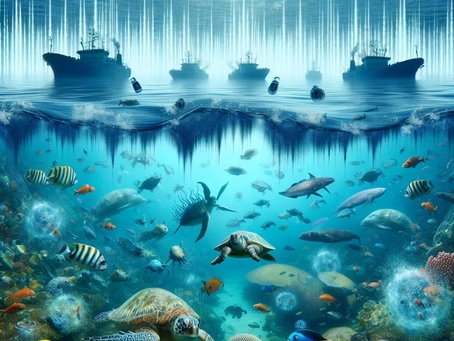The Unseen Threat: Ocean Noise Pollution’s Toll on Marine Life
Over recent decades, the ocean’s soundscape has been transformed by a dramatic surge in human-generated noise. This invisible pollutant now poses a severe threat to marine species that depend on sound for their very survival. From communication breakdowns to physical harm, the escalating cacophony is disrupting essential life functions and pushing marine ecosystems toward a silent crisis.
Why the Ocean’s Soundscape Matters
For marine life, sound is not a luxury but a necessity. In the deep blue, where light fades quickly, sound becomes the primary medium for interaction and survival.
The Vital Role of Sound
Marine species rely on acoustics for every critical life function. Sound enables whales to communicate across vast distances, allows dolphins to echolocate their prey with precision, and guides fish to their breeding grounds. This reliance makes the clarity of the marine soundscape a matter of life and death.
Navigation and Social Bonds
Beyond basic survival, sound facilitates complex social structures. Mating calls, group coordination, and maternal bonding all depend on acoustic signals. When these signals are drowned out, the very fabric of marine society begins to fray.
The Human Activities Disrupting the Deep
The once serene underwater world now echoes with the sounds of human industry, creating a chaotic environment for its inhabitants.
Commercial Shipping: The Constant Hum
The global fleet of commercial vessels creates a pervasive, low-frequency hum that travels thousands of miles. This relentless background noise masks the natural sounds of the ocean, interfering with marine communication and navigation.
Seismic Surveys and Military Sonar
Airguns used in oil exploration generate intense, repetitive blasts that can cause physical harm to marine life. Similarly, military mid-frequency sonar has been linked to mass strandings of whales, demonstrating the immediate danger of these high-intensity sound sources.
The Multifaceted Impact on Marine Species
The consequences of noise pollution ripple through entire ecosystems, affecting species from the largest whales to the smallest invertebrates.
Communication Breakdown
Many marine animals are now forced to simplify their vocal calls or shout to be heard over the din. This simplification may reduce the information content of their communication, potentially impacting social bonding and reproductive success.
Physiological and Behavioral Stress
Chronic noise exposure triggers severe stress responses, compromising immune systems and reproductive capabilities. Many species exhibit avoidance behavior, abandoning critical feeding or breeding grounds to escape the noise, which leads to increased energy expenditure and reduced fitness.
Physical Harm and Mortality
Extremely loud noises can cause direct physical injury, including permanent hearing loss and internal tissue damage. In the most tragic cases, such as with certain sonar exposures, noise pollution has directly caused mass strandings and death.
Charting a Course Toward Quieter Seas
Addressing this pervasive threat requires a multi-faceted approach combining technology, policy, and global cooperation.
Technological Innovations
Developing and implementing quieter ship designs, propeller technologies, and noise-reduction systems for industrial equipment can significantly decrease our acoustic footprint. These innovations represent a critical step toward harmonizing human activity with the ocean’s natural soundscape.
The Power of Policy and Awareness
Effective regulation, including the establishment of marine quiet zones and stricter guidelines for noisy activities, is essential. Simultaneously, raising public awareness about this invisible threat fosters the global will needed to implement meaningful change and protect our planet’s acoustic environment.

